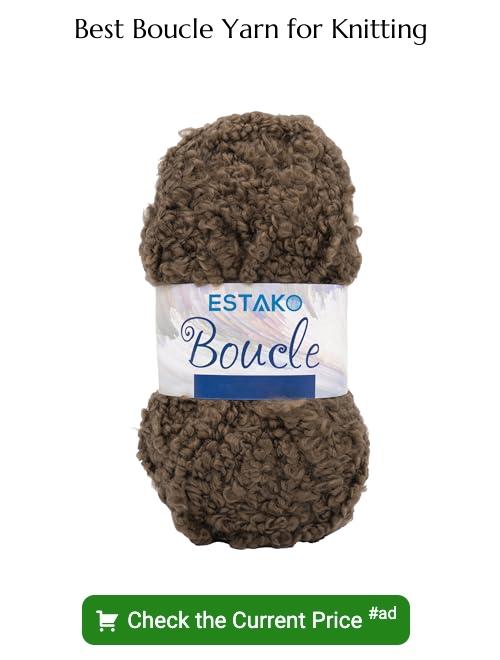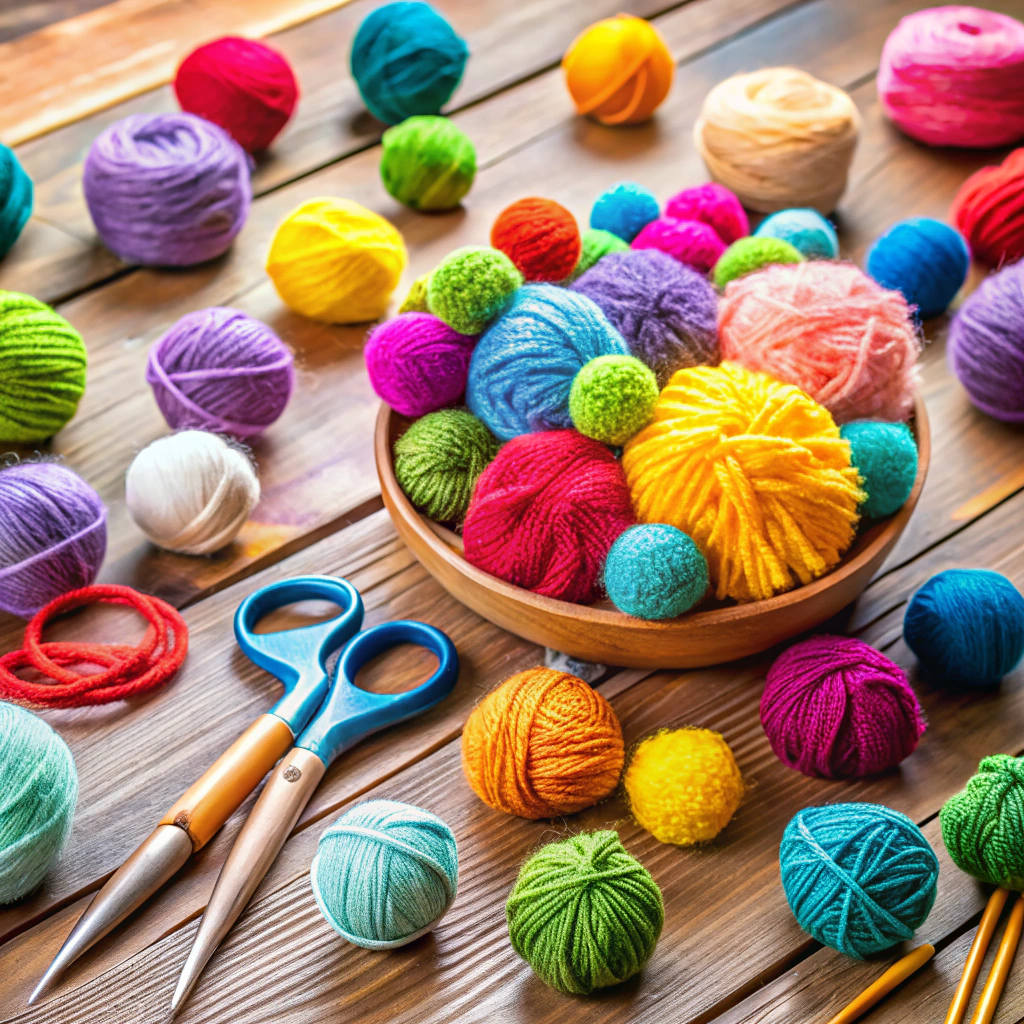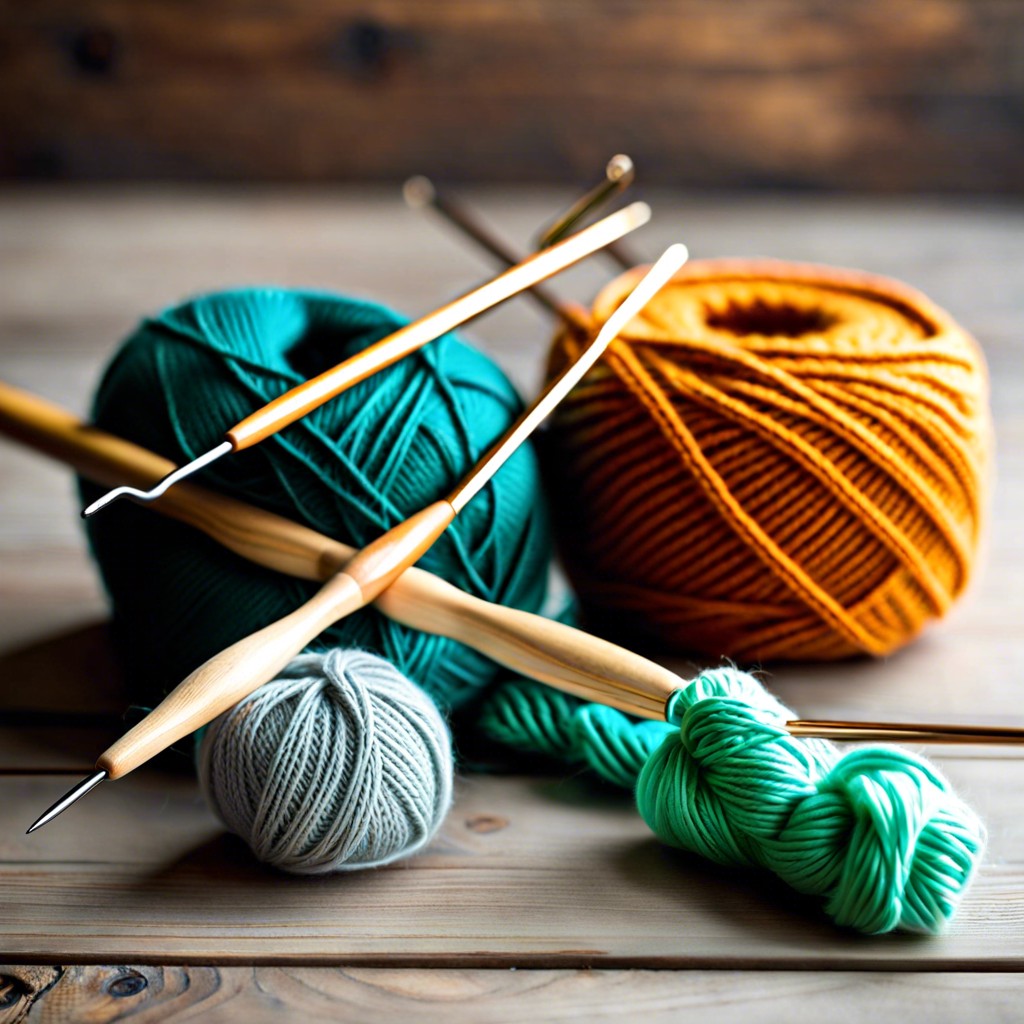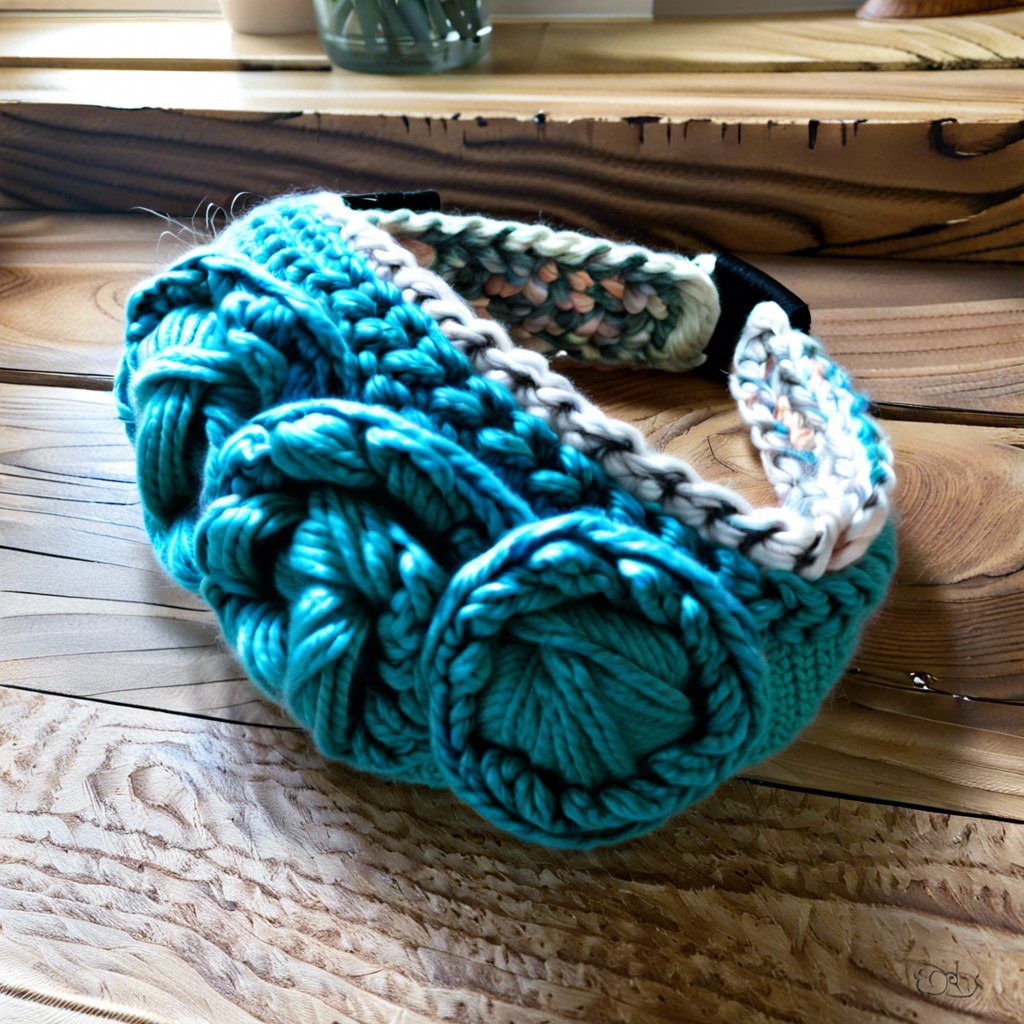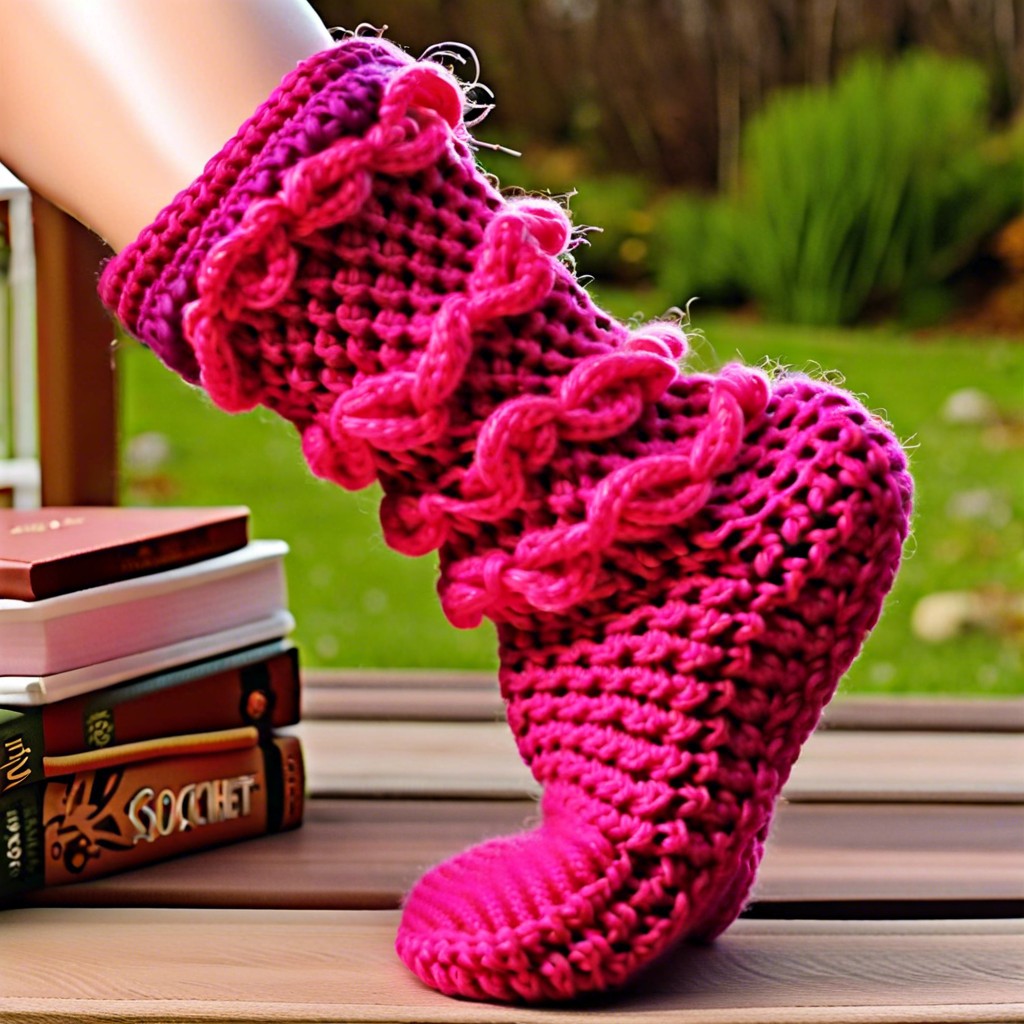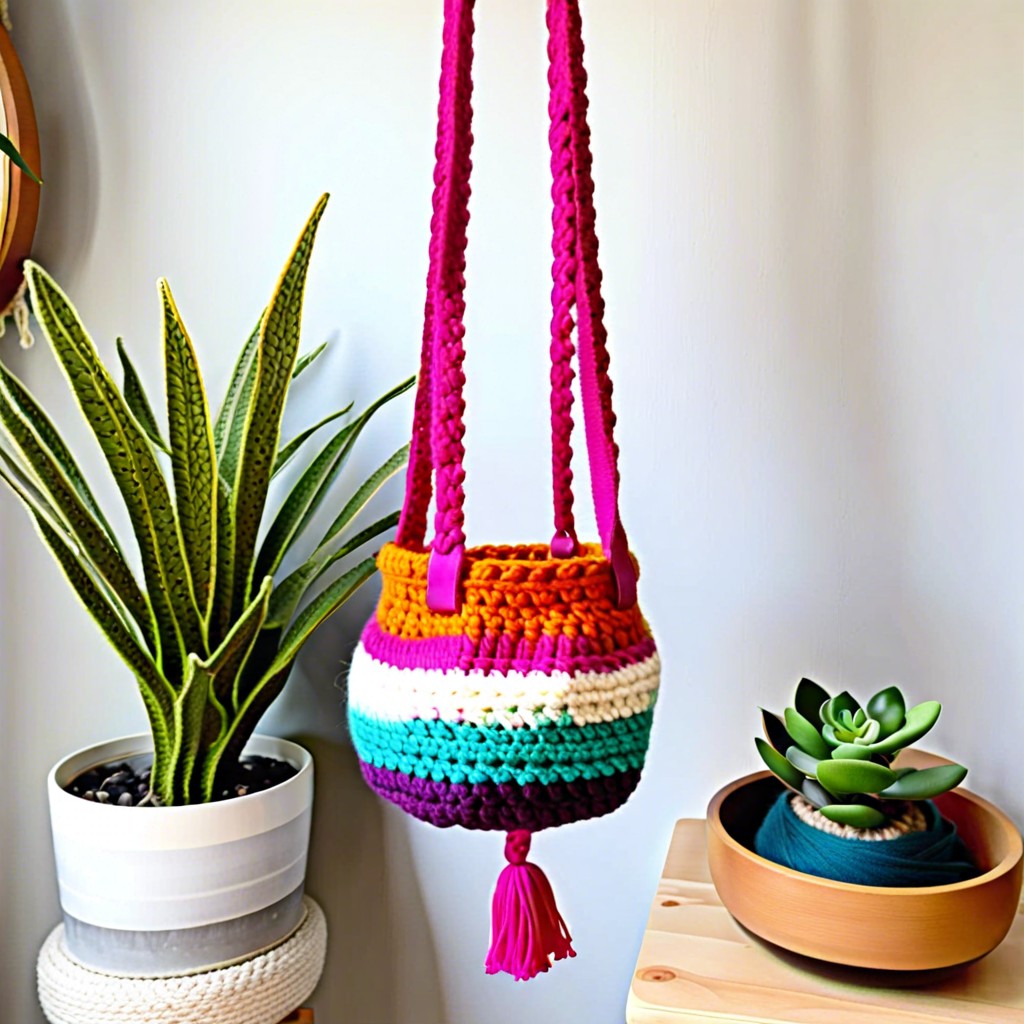Discover the unique characteristics and potential of boucle yarn, because it can transform your yarn crafts into textured masterpieces.
Bouclé yarn is a fascinating addition to any crocheting or knitting project, with its distinctive looped ply providing a unique texture. This yarn brings a delightful touch to garments, accessories, and home decor items, injecting visual interest and tactile appeal.
This article delves into the characteristics of bouclé yarn, its best uses, how to work with it, and handy tips for overcoming any challenges you might face. For a rich, comprehensive exploration of bouclé yarn, stay tuned to unfold its wonders.
Key takeaways:
- Boucle yarn creates visual interest and unique texture.
- Boucle yarn is available in various fiber types and weights.
- Boucle yarn is warm, snuggly, and voluminous.
- Boucle yarn can be used for a variety of projects, including sweaters, scarves, and home decor.
- Tips for working with boucle yarn: simplify patterns, choose the right needle, check tension, count stitches, and practice patience.
Definition of Boucle Yarn
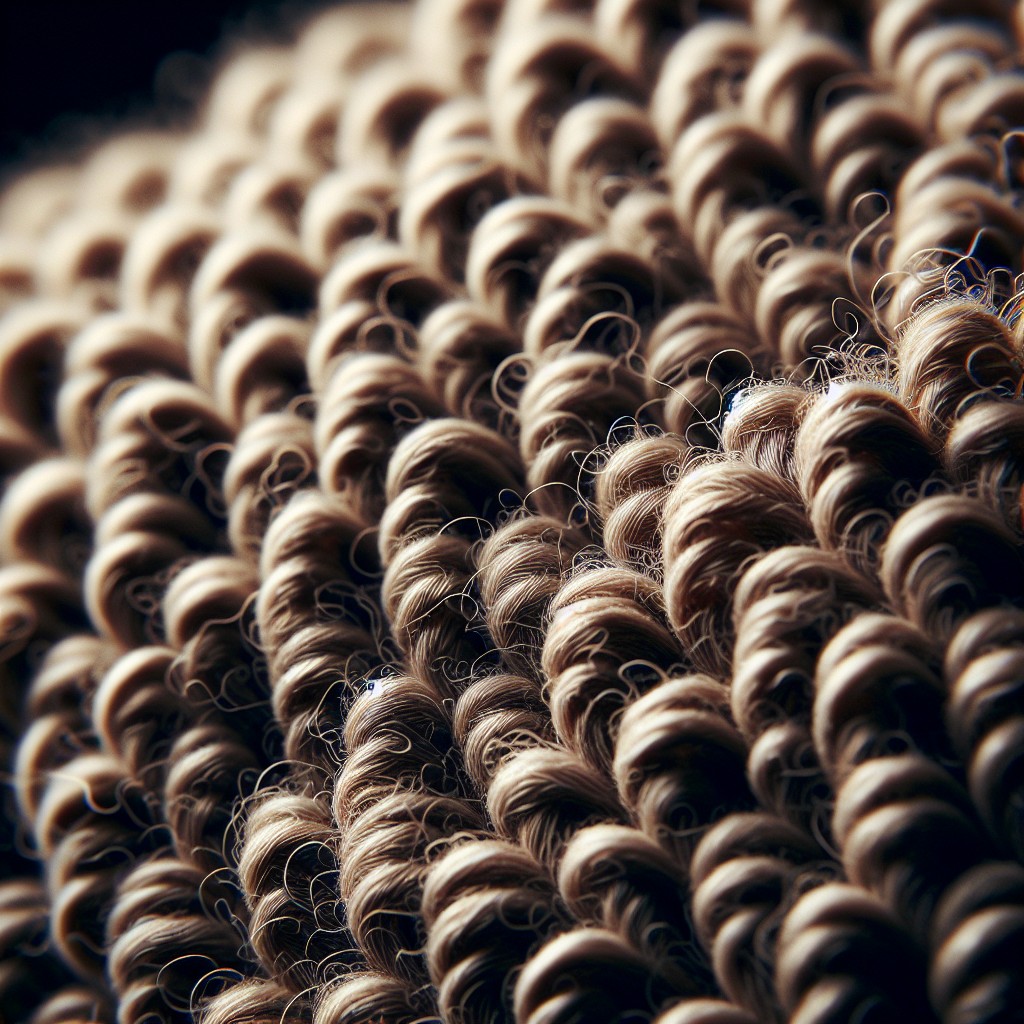
Boucle yarn is distinctive due to its looped texture. The term ‘boucle’ is derived from the French word for ‘curled’, which accurately describes the yarn’s unique appearance.
Crafted by introducing loops of yarn during the spinning process, this kind of yarn adds considerable interest and texture to any fabric, aiding in the creation of intricate design works. It’s available in several fiber types and weights, allowing for a wide range of potential applications.
The looped structure gives the finished fabric a bumpy, textured feel that’s particularly appealing in both knitting and crocheting projects, from apparel to home décor items. However, working with boucle yarn comes with some challenges that can be overcome with practice and patience.
Features of Boucle Yarn
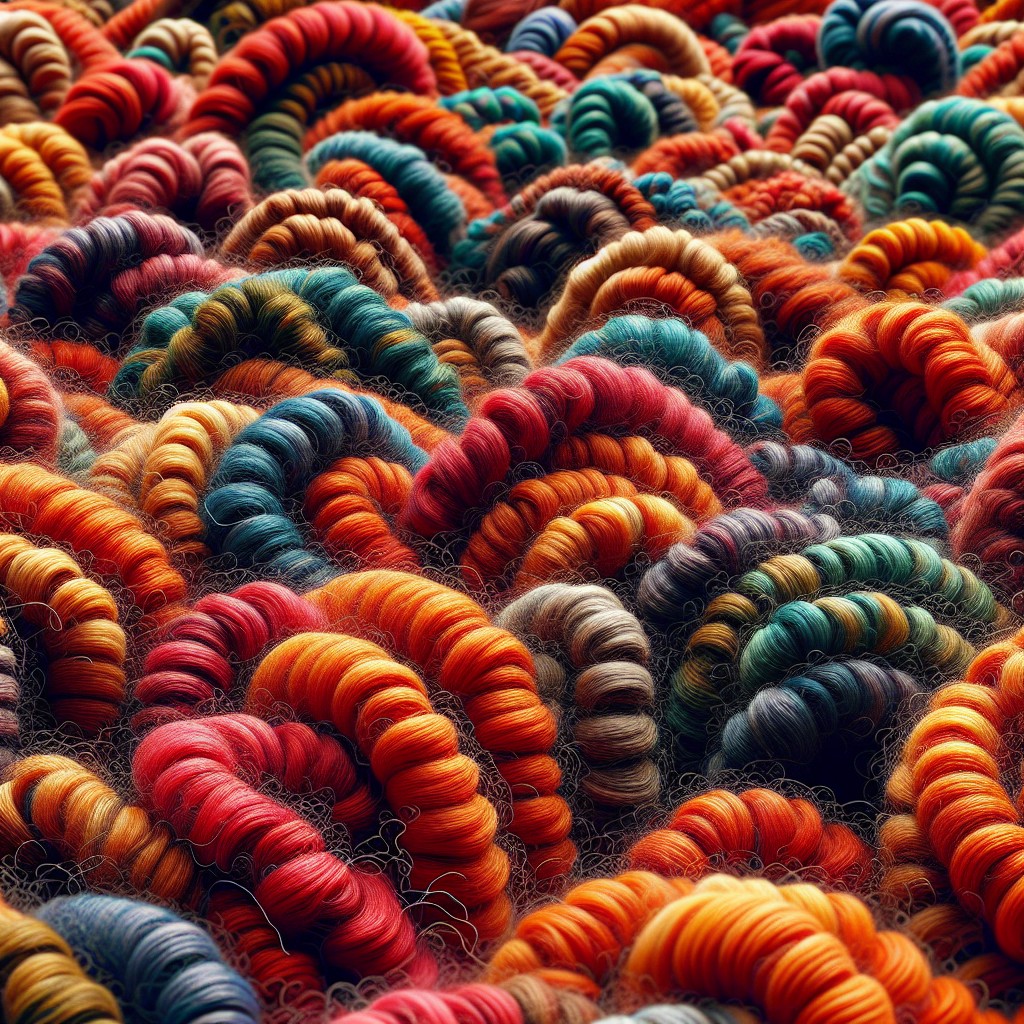
Boucle yarn carries a distinct texture that sets it apart from other fibers. Its name derives from the French word for ‘loop’, a quality that distinctly manifests in its physical attributes.
1. Loopy texture: The special looping design of this yarn creates an interesting, unique visual element.
2. Voluminous: Thanks to the loops, boucle yarn often lends a rich, voluminous feel to the finished item, adding a touch of luxury.
3. Warm and snuggly: Boucle yarn effectively traps heat, making items made from it especially warm and cozy, perfect for colder weather.
4. Diverse fiber sources: It can be made from any number of fibers, including wool, cotton, and synthetic materials.
5. Dense yet lightweight: Despite its thickness, boucle yarn is fairly lightweight.
When working with boucle yarn, the distinctive texture has an impact on the pattern and stitch visibility of the final product, which should be considered when choosing your project.
Types of Fibers in Boucle Yarn
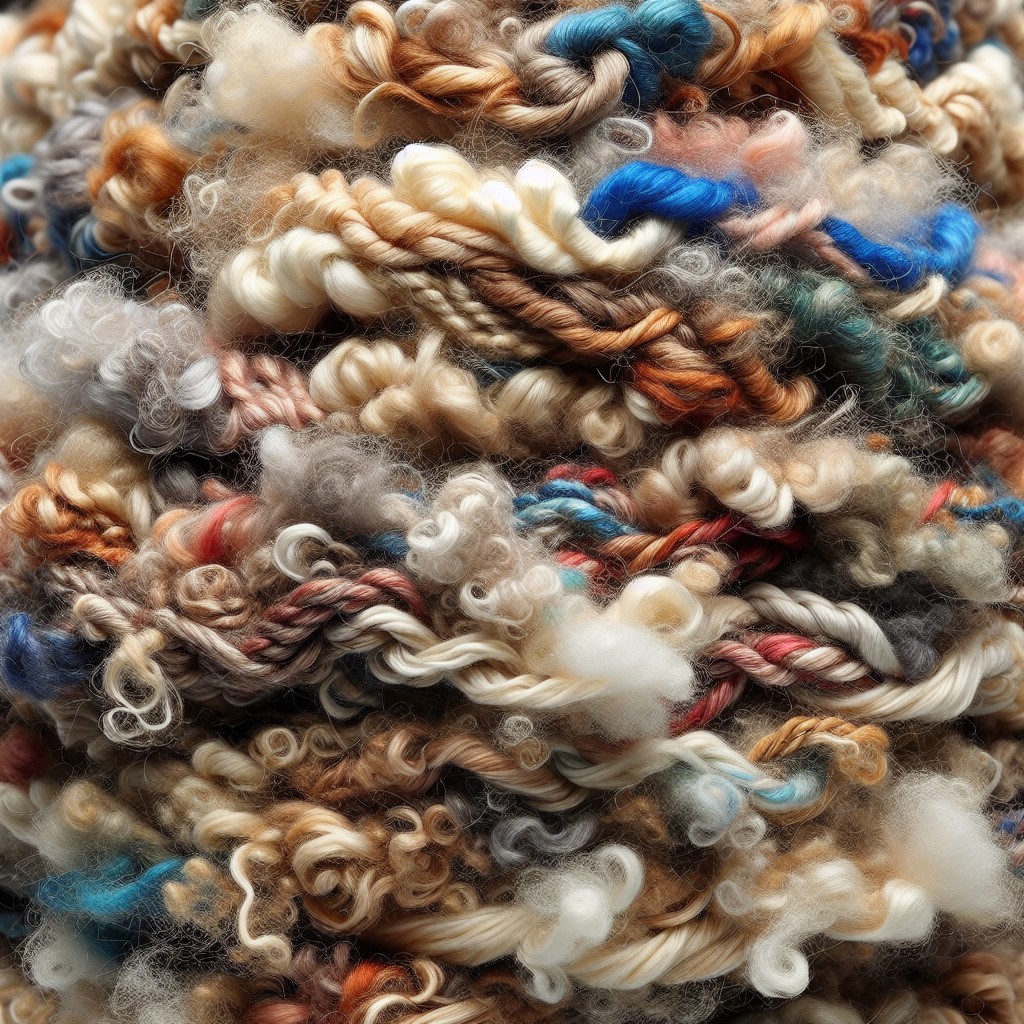
Bouclé yarn can be made from a variety of fibers, each with unique characteristics, influencing the feel, look, and function of the finished product.
1. Wool: Offers warmth, elasticity, and resilience. It’s well-suited for winter clothing and blankets.
2. Cotton: Gives a softer touch and is breathable, which makes it perfect for spring and summer garments.
3. Silk: Delivers a luxurious sheen and softness, ideal for high-end fashion accessories.
4. Synthetic fibers (like acrylic and nylon): Provide durability and easy care, making them suitable for everyday items.
5. Blends: Often, bouclé yarns combine two or more fibers, striking a balance between the characteristics of each material.
Choosing the right type of fiber ultimately depends on your project requirements. Its comfort, care instructions, and durability are vital factors to consider when selecting the most appropriate bouclé yarn.
The Production Process of Boucle Yarn
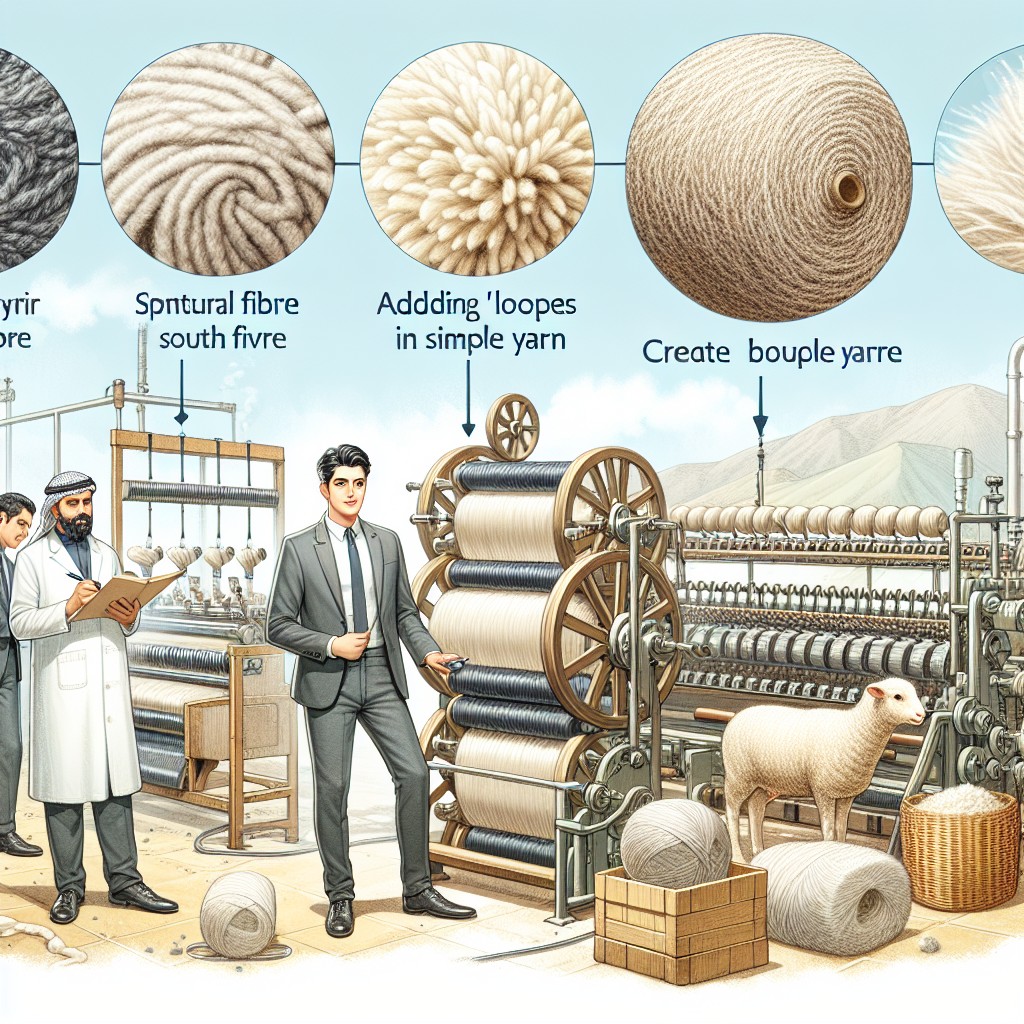
Boucle yarn is truly a spectacle of the crafting world, with its unique loops and curls that add texture and depth to any project. Its creation involves a meticulous process that is as intriguing as the yarn itself.
Firstly, a core yarn, usually smooth and fine, is selected. This serves as the anchor around which the loops are formed. Next, one or more additional threads are added, which are usually thicker or more textured. These additional threads are wrapped at different tensions around the core yarn – loose to form the distinct loops, and tighter to secure them in place.
The wrapping threads are introduced at specific intervals to create a pattern of loops, or ‘boucle‘, that uniquely characterizes this yarn. All threads are then plyed tightly together to preserve the loops from untangling during handling or knitting.
It’s worth noting that the wrapping process is often done by hand, which makes boucle yarn varieties as unique as the artisans who create them, providing a truly distinctive choice for crafters looking to elevate their knit or crochet projects.
Remember, mastery in creating boucle yarn requires a delicate balance between maintaining the integrity of the loops while ensuring the yarn’s overall strength and durability.
Applications and Uses of Boucle Yarn
Boucle yarn adds texture and dimension to crafts, making it an excellent choice for various projects. It is often used in sweater and scarf designs, as the unique structure of the yarn creates a looped effect that gives garments a cozy, tactile feel.
In home decor, the yarn excels in cushion covers and throw blankets, bringing warmth and comfort to any space. The intricate texture also lends itself well to rug making, offering durability coupled with a plush feel underfoot.
Beyond traditional knitting and crocheting, boucle yarn has a place in tapestry weaving. Its texture can bring a new level of detail to woven designs, adding depth and interest.
Additionally, as a craft material, it can be incorporated into homemade accessories like bags or hair ties, bestowing a touch of whimsy and unique flair. Its versatility extends to jewelry crafting too, ideal for creating fashionable yarn necklaces or bracelets.
While boucle yarn can be more challenging to work with compared to smoother yarns, the textured and tactile results it produces make it a worthwhile choice for these applications.
Tips for Working With Boucle Yarn
Navigating boucle yarn may initially pose a challenge due to its looped texture. However, following these tips can make the process smoother.
1. Simplify Your Pattern: Boucle yarn’s distinct feel causes intricate stitch patterns to become less visible. Instead, rely on the yarn’s texture to add depth and opt for basic stitches.
2. Choose the Right Needle: A larger needle size can simplify maneuvering the yarn. This provides extra space for the loops to move freely, reducing your chances of splitting the yarn.
3. Check Your Tension: Keeping a looser tension ensures the loops don’t get caught or lost while crocheting or knitting. Opt for a relaxed approach.
4. Counting Stitches: Due to its texture, counting stitches with boucle yarn can be challenging. Consider adding stitch markers at regular intervals to keep track.
5. Practice Patience: Working with this yarn requires a little more patience than conventional types. Its unique texture may take time to get used to, but the end result is well worth the effort.
Remember, every new material poses distinct challenges, yet adds to the overall variety and repertoire of your crafts. Enjoy the process and the textural richness boucle yarn brings to your creation.
Common Challenges of Using Boucle Yarn
One common challenge can be managing the uneven texture, which may disguise stitch definitions in both knitting and crocheting. The pronounced loops can make it difficult to achieve uniformity and can ultimately make your project seem denser than expected.
Another potential issue could be the difficulty in ripping back errors. Working with this type of yarn, unless you’re careful, it’s easy to miss a loop or two, which can result in unknitting or “frogging” if a mistake is made.
Finally, due to its unique texture, boucle yarn may not be the best choice for intricate stitch patterns as the resulting details may be lost in the loops and bumps. Using simple stitch patterns is usually more effective.
However, with attentive handling and some patience, these challenges can be overcome, making boucle an excellent choice for certain projects. Knowledge of its character and how to handle it will enable you to use boucle yarn to achieve charming results in your craft work.
Boucle Yarn in Knitting and Crocheting
Working with boucle yarn in both knitting and crocheting requires some unique techniques due to its looped, textured design. Here are a few tips to keep your project on track:
1. Tension: The loops in boucle yarn can create tension inconsistencies. It’s key to maintain a gentle, even tension – don’t tighten too much as it could lead to knotting.
2. Needle size: A larger needle or hook can help you see your stitches clearer, aiding to prevent accidental skipping.
3. Stitch Choice: Simple stitches work best. Complex patterns can be lost within the texture of the yarn.
4. Patience: Boucle yarn isn’t necessarily a ‘quick’ yarn to work with. Deliberate, steady progress will yield the best results.
5. Practice: Lastly, try a small swatch before taking on a bigger project. This way, you familiarize yourself with the yarn’s quirks.
Remember, the unique beauty of boucle relies on its texture, not intricate stitching. Simplistic design will highlight the yarn’s character best.
Patterns Suitable for Boucle Yarn
Boucle yarn, with its characteristically looped threads, lends versatility and textural appeal to a variety of projects. For new crafters, it’s helpful to know that not every pattern is suitable. Here are a few pointers:
Simplicity is key. Simple stitch patterns work best, as they allow the texture of the yarn to stand out. Complex stitches can often get lost in the loops.
Consider projects that involve knit or purl stitches. Garter stitch, stockinette, and other straightforward designs can be effective options.
Bulky boucle yarn is particularly suited for scarves, blankets, or throws. These offer both warmth and incredibly soft texture.
When it comes to fashion items, ruanas, ponchos, as well as loose, flowy sweaters, utilize the drape of boucle yarn beautifully.
Avoid intricate lacework or detailed cables. These patterns tend to be obscured by the distinctive texture of boucle.
Keep in mind that boucle yarn has a complete character of its own, so allow its unique qualities to take center stage in your project selection process.
Selecting the Right Needles for Boucle Yarn
When working with boucle yarn, the selection of the right needle type and size is essential. Consider these factors:
1. Boucle Yarn Weight: Lighter boucle yarn generally calls for smaller needles, while heavier yarn will require larger ones.
2. Loop Size: The presence of larger loops in the yarn calls for bigger needles. This prevents the loop from getting tangled or snagged during the crafting process.
3. Material of Needle: Opt for a smoother material like metal or plastic to ensure ease of gliding through the loops.
4. Needle Point: It’s better to use needles with a slightly blunt point to avoid snagging.
5. Personal Comfort: Choose a needle with a grip you find comfortable. This helps to prevent hand fatigue during prolonged knitting sessions.
Remember, some trials can be necessary to find the perfect needle-yarn match, so don’t be discouraged if the first pick isn’t ideal.
Caring for Boucle Yarn
To ensure your crafted items made from boucle yarn retain their texture and beauty, it’s essential to follow these care tips.
First, always check the yarn label for the manufacturer’s care instructions. Some boucle yarns are machine washable on a gentle cycle, while others require hand washing. If in doubt, hand wash the item in cold water with a mild detergent, and avoid wringing or twisting which might distort the loops.
When it comes to drying, it’s advisable to lay the item flat on a clean, dry towel, reshaping it gently to its original form. Avoid hanging as this might cause the garment to stretch or deform due to gravity’s pull on the loops.
Lastly, when ironing is necessary, use a low heat setting and place a damp cloth between the iron and the item to protect the delicate looped texture. High heat or direct contact with the iron can flatten the unique boucle texture or, worse, cause damage to the fibers. Remember, proper care can greatly enhance the life and looks of your boucle yarn creations.
Storing Boucle Yarn
Maintaining the quality of your boucle yarn during storage is essential. First, try to store all yarn in a cool, dry, and clean place. Avoid humidity which can encourage mold growth, fading, or discoloration.
Opt for clear, plastic, airtight containers to protect the yarn from pests such as moths. The containers should be well-sealed, but allow easy visibility of the yarn and quick access when needed. For extra protection, consider adding cedar chips to the container; they add a fresh scent and deter bugs.
Avoid storing yarn in direct sunlight, as this can cause certain color dyes to fade over time.
Finally, while some may find it tempting to store the yarn in its ball form for easy identification, this can potentially stretch out the yarn and alter its tension. Therefore, storing your boucle yarn loosely is recommended. Avoid tightly packing to maintain the yarn’s structure and preservation.
Keep these tips in mind during storage to ensure a longer lifespan and a substantial quality of your boucle yarn, ready for when creativity strikes next.
Buying Boucle Yarn: What to Look For
Consider the fiber content: Whether it’s made from wool, cotton, silk, or synthetic fibers, boucle yarn’s feel and durability can vastly change. Learn about the different fiber types to understand which may be most suitable for your project.
Examine the yarn’s loops: The size and tightness of the loops in boucle yarn can affect the end product. Larger, loose loops create a textured, bulky look, while smaller, tighter loops provide a more subtle texture.
Check the weight: This can impact the drape and feel of the final product. Light or medium weights are ideal for garments, while bulky boucle yarn is perfect for cozy blankets or throws.
Test for softness: Rub the yarn between your fingers. It should feel soft and not scratchy, keeping in mind it’ll be worn against the skin.
Note the washing instructions: Some boucle yarns are machine washable, while others require hand washing. Make sure the care instructions align with your preferences and abilities.
Review the cost: Boucle yarn prices can vary, depending on factors like fiber content and brand. Always create a budget for your project to help guide your purchase.
Shops Selling Boucle Yarn Online
Several online retailers cater to your boucle yarn needs. Consider checking out popular choices such as LoveCrafts, which boasts an extensive collection of boucle yarns in various colors and textures.
Yarn.com (also known as WEBS) is another reliable online shop; they offer a diverse range of fibers. While browsing the site, you’ll find cotton boucle, mohair boucle, and even boucle blends.
A noteworthy platform is Etsy where independent artisans sell unique, hand-dyed boucle yarn. This marketplace is a perfect source for finding one-of-a-kind yarns not available anywhere else.
Consider also Lion Brand, an age-old company known for its quality yarns including boucle variants. Their website is user-friendly and includes great filters to direct you to the perfect yarn.
Remember that each online shop has its return policy and shipping calendars, so ensure you’re familiar with these before making a purchase.
Find Patterns for Boucle Yarn
Horizons in crocheting and knitting widen by exploring different patterns specifically made for boucle yarn. Boucle-friendly patterns typically adopt simpler stitches to let the yarn’s unique texture take center stage.
Here are points to consider when selecting a pattern:
- Start with elementary patterns: If you’re new to boucle yarn, it’s recommended to start with simpler designs. Look for patterns that use plain stitches such as garter stitch in knitting or single crochet in crocheting. These stitches will highlight the yarn’s texture without becoming too complicated to work with.
- Be cautious of intricate features: Lace patterns or designs with many yarn overs can be challenging with boucle due to its irregular texture and the potential for snagging.
- Accessorize: Patterns for accessories like scarves, hats, and shawls are prevalent and ideal for boucle yarn. They give just enough space for the yarn’s unique characteristics to shine without overwhelming the piece.
- Make home decorations: Due to its bulkiness, boucle yarn is great for making items like blankets or cushion covers. Look for patterns specific to homewares for a cozy decoration touch.
- Avoid tight fitting clothes: Boucle yarn is not stretchy, hence it is best to avoid patterns that require a lot of flexibility or close fitting, such as socks or gloves.
Numerous pattern databases online, like Ravelry, provide a host of options specifically suited for boucle yarn. With a little bit of research and exploration, you’ll have plenty of inspiration for your next boucle project.
Substituting for Boucle Yarn in a Pattern
Considering the unique texture and looped structure of boucle yarn, swapping it with another type may alter your project’s final look and feel. However, when a substitute is necessary, there are a few options that can yield similar results.
Firstly, textured yarns such as popcorn, chenille, or spiral yarns may mimic the feel of boucle. While these may not create identical results, they come close in providing interesting texture to your projects.
Secondly, if you’re looking for a similar thickness, several strands of thinner yarns like worsted or DK weight can be used together to reach the desired thickness. This can be useful when the pattern requires bulkiness, and you want to stay within the same yarn weight category.
Lastly, keep gauge in mind. The pattern’s stitch count per inch should match the substituted yarn to maintain the design’s dimensions. Swatches can be knitted or crocheted to test and confirm your choice. Remember, successful substitution begins with understanding the original yarn’s role in the pattern and approximating its texture, weight, and gauge as closely as possible.
Just a note that substitution is part art, part science, and may require some experimentation. Embrace the process and enjoy the chance to create a unique piece.
FAQ
What is a bouclé yarn?
A bouclé yarn is a three-ply yarn comprising a core yarn, looping singles, and a binder yarn that forms large, open loops or textured bumps depending on the fibers used.
Can you crochet with bouclé?
Yes, you can crochet with bouclé yarn, but it’s recommended to use easier stitches like single crochet due to the yarn’s texture.
What weight is bouclé yarn?
Bouclé yarn is a light weight 3 DK yarn that tends to behave more like a sport yarn.
What is the typical technique to realize a bouclé yarn?
The typical technique to realize a bouclé yarn involves tightly twisting a base yarn, then wrapping additional yarns around it in looser, puffy loops.
How does the structure of bouclé yarn impact the final crochet product?
The structure of bouclé yarn, with its loops and curls, impacts the final crochet product by adding textural interest and producing a fluffy, soft finish that can add warmth and style.
Are there special crochet hooks recommended for bouclé yarn?
Yes, it is recommended to use larger sized crochet hooks with bouclé yarn to work between loops and prevent snagging.
